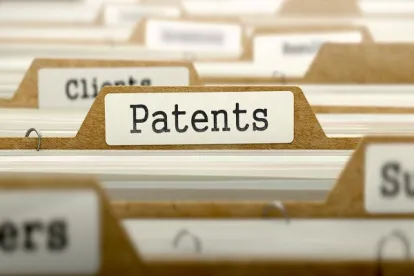Pharmaceutical and biotech companies breathed a sigh of relief Monday when the Federal Circuit unanimously ruled in a precedential opinion that the mere sale of manufacturing services to create embodiments of a patented product is not a “commercial sale” of the invention that triggers the on-sale bar of 35 U.S.C. § 102(b) (pre-AIA).[1] The en banc opinion in The Medicines Company v. Hospira Inc., Case No. 14-1469 (Fed. Cir. July 11, 2016) considerably mitigates patent law’s disparate treatment of inventors who rely upon contract manufacturing organizations (CMOs) and those who manufacture in-house.
Importantly, the Federal Circuit did not go so far as to recognize a blanket “supplier exception” to what would otherwise constitute a commercial sale in MedCo. The focus on the inquiry rests upon the character of the transaction, not the identity of the participants. The court identified several “significant” factors to be evaluated by courts in determining whether a transaction is a commercial sale or offer for sale under § 102(b), including: (1) whether transaction is between a supplier and inventor; (2) whether the inventor has transferred titled to the supplier; (3) whether the transaction is confidential (e.g., whether the supplier has authority to market or release the product, or to disclose the process of manufacturing); and (4) whether the transaction is a sale of a product at full market value or a “pre-commercial investment.”[2]
In MedCo, the en banc Federal Circuit affirmed the district court’s determination that The Medicines Company’s (“MedCo”) use of contract manufacturing services did not invalidate U.S. Patent Nos. 7,582,727 and 7,598,343 (the “patents-in-suit”) under the on-sale bar. In so holding, the court vacated a previous Federal Circuit panel’s decision that MedCo’s asserted claims were invalid under § 102(b) based on transactions between MedCo (the Patentee) and a third-party manufacturing company, Ben Venue Laboratories (“BVL”), hired to manufacture batches of MedCo’s blood thinner drug Angiomax (bivalirudin). The case was ultimately remanded to the original panel for consideration of other issues not reached in light of its invalidity finding.
MedCo, a specialty pharmaceutical company, did not own or operate its own drug manufacturing facilities. Rather, like many pharmaceutical companies, MedCo relied on CMOs such as BVL to produce commercial quantities of its drugs. During development and testing of Angiomax, MedCo developed a new compounding process that it claimed in the patents-in-suit. MedCo filed the patent applications directed to the compounding process on July 27, 2008—making July 27, 2007 the critical date for § 102(b) purposes.
In late 2006, MedCo contracted with BVL to produce three “validation batches” of its drug according to the new compounding process. Each batch manufactured by BVL was commercially saleable per the terms of the parties’ manufacturing protocol and had a collective market value of well over $20 million. After manufacture, the drugs were placed in quarantine pending FDA approval. It was not until August 2007 that the drugs were approved and saleable.
The lawsuit arose when Hospira submitted two abbreviated new drug applications (ANDAs) that sought FDA approval for generic versions of MedCo’s Angiomax. MedCo sued Hospira alleging that its ANDA filings infringed the product-by-process claims of the patents-in-suit, Hospira asserted that MedCo’s patents were invalid, in part because the on-sale bar was triggered when MedCo paid BVL to manufacture the drug prior to the July 27, 2007 critical date. Hospira argued that BVL’s sale of batches of the manufactured drug to MedCo was sufficient to trigger § 102(b), and alternatively that the bar was triggered because the transaction provided MedCo a commercial benefit (i.e., a stockpile of the drug for future sale) to the inventor.
The district court disagreed. After a bench trial, the court found that the transactions between MedCo and BVL did not constitute a commercial sale because the transactions were sales of manufacturing services only; title to the manufactured drugs always resided with MedCo. The district court also concluded that the transaction did not implicate § 102(b) because MedCo derived no commercial profit prior to the critical date, since the batches were for “validation purposes,” characterizing the batches as experimental rather than commercial.
On appeal, a Federal Circuit panel held that the district court erred in concluding that the transactions were not commercial activity within the meaning of § 102(b).[3] The panel concluded that any commercial exploitation prior to the critical date triggered the on-sale bar, even if the inventor did not transfer title to the commercial embodiment of the invention. In so holding, the panel found no distinction between a commercial sale of products prepared by a patented method and sale of services that result in a patented product-by-process.
On rehearing en banc, the Federal Circuit vacated the panel’s determination and unanimously concluded that no invalidating commercial sale under § 102(b) occurred between MedCo and BVL. Guided by the Supreme Court’s opinion in Pfaff,[4] the Federal Circuit concluded that “to be ‘on sale’ under § 102(b), a product must be the subject of a commercial sale or offer for sale, and that a commercial sale is one that bears the general hallmarks of a sale pursuant to Section 2-106 of the Uniform Commercial Code.”[5]
Citing Pfaff, the court focused on whether the parties’ transactions would be viewed by the “commercial community” as a sale or offer for sale in the commercial law sense. To that end, the Federal Circuit relied on the Uniform Commercial Code (UCC) to define a commercial sale for § 102(b) purposes and concluded that the transaction with contract manufacturer BVL did not constitute a commercial sale of the invention.
Writing for the court, Judge O’Malley outlined three broad reasons for the Federal Circuit’s conclusion that no invalidating sale took place. First, only manufacturing services—rather than the invention—was sold to the inventors. Second, the inventor maintained control of the invention. And third, commercial benefit, without anything more, does not trigger the on-sale bar.
First, the court rejected Hospira’s argument that BVL put the invention “on sale” by manufacturing embodiments of the patented product for MedCo. Reviewing the plain language of 102(b), the court noted that the statute requires “the invention” be on sale for the bar to apply. Thus, whether a commercial sale of “the invention” occurred necessitated review of (1) the subject matter of MedCo’s invention and (2) the subject matter of the MedCo-BVL transaction.
Reciting years of Federal Circuit precedent, the court explained that the “invention” of a product-by-process claim is the product itself, not the process by which that product is created. Acknowledging that concept of a “sale” as applied to a product-by-process patent is ambiguous, the court nonetheless rejected Hospira’s argument that BVL’s manufacture of the patented product (Angiomax) put the invention “on sale.” The court reasoned that where invention is a product, performing an unclaimed process to create the product, without an accompanying “commercial sale” of that product, cannot trigger the on-sale bar.[6]
The Federal Circuit rejected Hospira’s urging to characterize the MedCo-BVL transactions as the “sale of validation batches,” instead agreeing with the district court that BVL acted “as a pair of ‘laboratory hands’” under MedCo’s instructions to reduce its invention to practice. The most natural conclusion, the court determined, was that BVL sold its contract manufacturing services—not the patented invention—to MedCo. The “mere sale of manufacturing services by a contract manufacturer to an inventor to create embodiments of a patented product for the inventor,” the court clarified “does not constitute a ‘commercial sale’ of the invention.” [7]
Second, the Federal Circuit found that the absence of title transfer to BVL was significant evidence that the “sale” at issue was not of the invention but of manufacturing services. The UCC’s definition of “sale” requires the passing of title from the seller to the buyer. U.C.C. § 2-106(1). The court clarified that this fact was not of dispositive, “talismanic” consequence, but counseled that absence of title transfer is a “significant” factor, in part because it generally indicates an absence of commercial marketing of the product. [8]
Also significant to the court’s analysis was the confidential nature of the MedCo-BVL transactions. The court explained that while not disqualifying in all instances, the scope and nature of the confidentiality requirements imposed is relevant to whether the sale was intended for commercial marketing purposes.[9] The court contrasted situations where the supplier receives “blanket” authority to market the patented product or disclose the process for manufacturing the product to other. BVL’s lack of authority to do so weighed against a conclusion that the sale was for commercial marketing purposes.
Finally, the court rejected Hospira’s argument that commercial benefit is sufficient to trigger the on-sale bar. The court found the argument foreclosed by both the plain language of the statute, which requires the invention be “on sale,” and the Pfaff test, which “does not look to broad policy rationales in assessing whether the on-sale bar applies.”[10] The Federal Circuit concluded that stockpiling or inventory building is pre-commercial activity in preparation for future sale. Because the on-sale bar is triggered by actual commercial marketing of the invention—not preparation for potential or eventual marketing—the court concluded bare commercial benefit cannot trigger the on-sale bar.[11]
The court further declined to find any distinction between stockpiling undertaken by inventor assisted by a contract manufacturer and an inventor in-house (which has never been held to trigger the on-sale bar). The court refused to expand § 102(b) to encompass stockpiling by inventors who outsource manufacturing, finding that such an expansion would ignore the wording Congress chose when enacting the statute.
The MedCo opinion is heralded as win for smaller enterprises who lack in-house manufacturing capabilities and outsource at least some amount of production. MedCo eliminates penalization of smaller companies that lack internal manufacturing capabilities or the funds to acquire a supplier prior to obtaining necessary supplies. In view of these changes, Companies that rely on the confidential services of a CMO, by choice or necessity, should consult with counsel to ensure communications and transactions with contracted suppliers do not threaten patent protection.
[1] The patents at issue in this case involve pre-AIA law, but the AIA retains the identical language of its predecessor statute regarding on sale activity that occurs prior to the defined critical date. Compare 35 U.S.C. § 102(a)(1) (post-AIA) with 35 U.S.C. § 102(b) (pre-AIA).
[2] Slip Op. at 31.
[3] Meds. Co. v. Hospira, Inc., 791 F.3d 1368 (Fed. Cir. 2015) (MedCo I).
[4] Pfaff clarified that the on-sale bar under 35 U.S.C. § 102(b) applies when, before the critical date, the claimed invention (1) was the subject of a commercial offer for sale; and (2) was ready for patenting. Pfaff v. Wells Elecs., Inc., 525 U.S. 55, 67–68 (1998).
[5] [5] Meds. Co. v. Hospira, Inc., Case No. 14-1469 (Fed. Cir. July 6, 2016) (precedential).
[6] Slip Op. at 20.
[7] Id. at 19.
[8] Id. at 23–24.
[9] Id. at 24–25.
[10] Id. at 26 (characterizing the Pfaff test as a “straightforward two-step process—[] which permits an inventor to ‘both understand and control the first commercial marketing of his invention.’”) (citing Pfaff, 525 U.S. at 67).
[11] Id. at 26–27.



 />i
/>i

